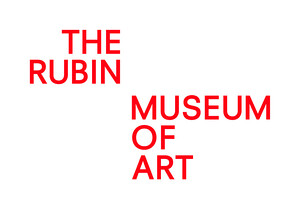A Lost Future: The Otolith Group
June 1–September 17, 2018
150 W 17th St
New York, NY 10011
USA
Opening June 1, the newly commissioned work, O Horizon, documents the history and speculative future of a pioneering art school in West Bengal, India.
Award-winning artist collective The Otolith Group will premiere their new film O Horizon beginning June 1 at the Rubin Museum of Art. The moving image work is the focal point of the second rotation of A Lost Future, a three-part exhibition featuring art from an evocative range of mediums by Shezad Dawood, Matti Braun, as well as other photographs and films by The Otolith Group. By challenging existing histories and considering speculative futures, the exhibition is part of the Rubin Museum’s 2018 thematic exploration of “The Future.”
O Horizon, on view at the Rubin Museum from June 1–September 17, 2018, focuses on Visva-Bharati in Santiniketan, founded in 1921 by Nobel laureate Rabindranath Tagore, the cosmopolitan polymath who shaped Indian art, literature, music, and education. Filmed, recorded and researched over five years in West Bengal, O Horizon stages moments from Tagore’s environmental pedagogy as a series of studies and sketches that allude to what might be described as a “Tagorean cosmopolitics.”
O Horizon draws upon the modernist theories of dance developed by Tagore as well as the experimental practices of mural, sculpture, painting and drawing developed by figures such as K.G. Subramanyan, Benode Behari Mukherjee, Nandalal Bose and Ramkinkar Baij, whose work shaped the ethos of generations of Indian modernists. Set in Santiniketan, Sriniketan and surrounding areas of Birbhum, West Bengal, O Horizon draws together song, music and recital, evoking a Tagorean imagination for the 21st century.
“Through their research-based practice centered on the moving image, The Otolith Group addresses some of the most urgent histories and social and political concerns of today,” said Beth Citron, curator. “O Horizon considers the complexity of Tagore’s pioneering vision for Santiniketan as it has evolved, looking at how the school’s experimental ethos has impacted its environment locally and beyond.”
The Rubin Museum will also feature other works and programming, including the films Otolith I, Otolith II, and Otolith III. Otolith III takes The Alien, an unrealized screenplay of the legendary Bengali director Satyajit Ray, as its point of departure. These films will be shown in the Rubin Museum’s theater on select dates and times. They will present earlier works, The Third Part of The Third Measure and Communists Like Us at e-flux, Eyebeam, and Asia Art Archive in America. Commissioned by bauhaus imaginista, O Horizon will also be presented at institutions around the world later this year as part of a celebration of the Bauhaus at 100.
The Otolith Group and other artists featured in A Lost Future apply an investigative, rhizomatic approach to mining the past in order to broaden the possibilities for what is yet to come. The alternative histories suggested in A Lost Future transcend space, time, and cultures, disrupting conventional hierarchies and a linear sense of time. Themes of virtuality, modernity, and world-making through rich storytelling are central to the exhibition.
A Lost Future is accompanied by a library highlighting the artists’ research-based practices, an audio guide, and a publication forthcoming in fall 2018, documenting all three rotations of the exhibition. The exhibition is part of the Rubin’s yearlong exploration of The Future, bringing together programs, exhibitions, and experiences that invites visitors to consider a future that isn’t fixed but fluid.
A Lost Future is supported by Rasika and Girish Reddy, and by public funds from the New York City Department of Cultural Affairs in partnership with the City Council. Additional support has been provided by Amita and Purnendu Chatterjee, and contributors to the 2018 Exhibitions Fund. The film O Horizon was commissioned by bauhaus imaginista and co-produced with the Rubin Museum, with the kind support of Project 88. The exhibition is organized by Beth Citron.


